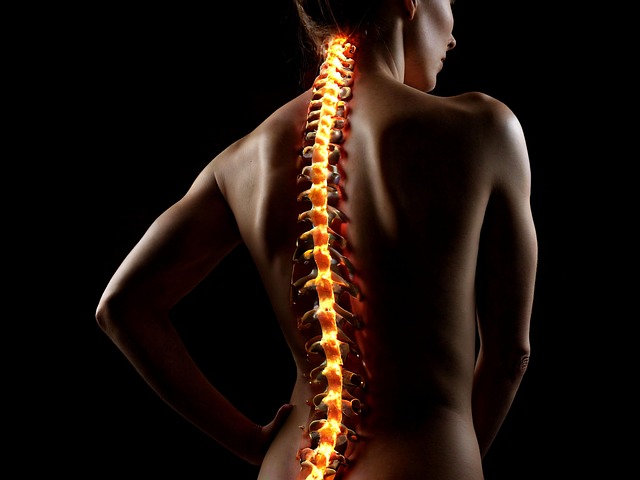Cognitive Processing Therapy (CPT) is an effective and structured approach to treating Post-Traumatic Stress Disorder (PTSD), addressing underlying cognitive patterns linked to trauma. By challenging and reframing negative thoughts, CPT reduces symptoms like flashbacks and nightmares, fostering resilience and improved quality of life. This therapy is highly individualized, tailored to specific trauma memories and beliefs, but may face challenges like re-traumatization. Integrated with other techniques like EMDR, CPT offers comprehensive PTSD care. Accessing CPT through trained professionals or community resources provides healing opportunities, while ongoing research positions it as a leading treatment option, potentially enhanced by digital tools in the future.
Discover the transformative power of Cognitive Processing Therapy (CPT) for Post-Traumatic Stress Disorder (PTSD). This evidence-based approach empowers individuals to heal by reshaping harmful thought patterns and memories. From understanding the fundamentals of PTSD to exploring real-life success stories, this comprehensive guide delves into the mechanics of CPT, its benefits, potential challenges, and future prospects. Uncover how this therapy can be a beacon of hope for those seeking effective PTSD treatment.
Understanding PTSD: A Mental Health Perspective

Post-traumatic stress disorder (PTSD) is a complex mental health condition that arises from exposure to traumatic events, such as military combat, accidents, natural disasters, or severe violence. From a cognitive processing perspective, PTSD is understood as a result of the brain’s inability to adequately process and integrate traumatic memories, leading to persistent symptoms like flashbacks, nightmares, and intense emotional reactions.
This therapy approach focuses on helping individuals challenge and reframe their thoughts related to the trauma, thereby altering the emotional responses associated with traumatic memories. By understanding PTSD as a cognitive processing disorder, therapists can employ tailored strategies in PTSD treatment to address the underlying thought patterns that contribute to the maintenance of symptoms, ultimately fostering resilience and improving quality of life for those affected by this condition.
The Role of Cognitive Processing in Healing

Cognitive processing plays a pivotal role in healing from Post-Traumatic Stress Disorder (PTSD). By focusing on the connection between thoughts, feelings, and behaviors, this approach helps individuals challenge and change unhelpful cognitive patterns that have developed as a result of traumatic experiences. Through careful examination and restructuring of these thought processes, PTSD treatment becomes more effective.
This process involves identifying negative or distorted beliefs about oneself, others, or the world that emerged following trauma. By learning to recognize these cognitive distortions, individuals can begin to replace them with more balanced and realistic perspectives. As these new ways of thinking are integrated into daily life, symptoms of PTSD such as flashbacks, nightmares, and avoidance behaviors often diminish, fostering a greater sense of calm and well-being.
How CPT Works: Step-by-Step Guide

Cognitive Processing Therapy (CPT) is a structured and evidence-based approach designed to help individuals cope with post-traumatic stress disorder (PTSD). This therapy works by guiding patients through a step-by-step process to challenge and change unhelpful thoughts and behaviors associated with traumatic memories.
1. Identification of Traumatic Memories: The first step involves identifying specific traumatic events that have led to PTSD symptoms. Patients work with their therapist to pinpoint these triggers.
2. Journaling and Thought Identification: Patients are encouraged to keep a journal where they record their thoughts, feelings, and behaviors when exposed to traumatic reminders. This helps in identifying negative thought patterns.
3. Challenging Negative Thoughts: Once identified, the therapist assists the patient in questioning and challenging these negative thoughts, helping them understand that their interpretations of events may not be accurate.
4. Exposure Therapy: Patients are gradually exposed to traumatic memories or situations in a safe and controlled environment, enabling them to confront and reduce their fear responses.
5. Restructuring Thoughts: Throughout the process, patients learn to replace negative thoughts with more realistic and balanced perspectives, fostering healthier coping mechanisms.
Benefits and Success Stories: Real-Life Impact

Cognitive Processing Therapy (CPT) has emerged as a highly effective PTSD treatment, offering significant benefits to those struggling with post-traumatic stress. By helping individuals challenge and reframe negative thoughts and beliefs associated with traumatic events, CPT empowers them to manage their symptoms more effectively. This therapy facilitates a profound real-life impact, enabling people to regain control over their lives, reduce the intensity of trauma memories, and improve overall well-being.
Success stories abound, with many individuals reporting substantial improvements in their ability to cope after undergoing CPT. These transformations range from improved sleep and reduced anxiety to enhanced relationships and increased participation in activities previously avoided due to fear or flashbacks. The positive outcomes of CPT are a testament to its potential as a game-changer in PTSD treatment, providing lasting relief and a renewed sense of normalcy for those who have experienced trauma.
Challenges and Considerations in Treatment

The effectiveness of Cognitive Processing Therapy (CPT) for Post-Traumatic Stress Disorder (PTSD) is well-documented, yet the treatment path isn’t always smooth. One significant challenge in PTSD treatment is the diverse nature of traumatic experiences; every individual’s response to trauma is unique, making one-size-fits-all approaches ineffective. Therefore, CPT must be tailored to each patient’s specific trauma memories and associated beliefs.
Another consideration is the potential for re-traumatization during therapy. As patients process and recall traumatic memories, they may experience intense emotions, leading to avoidance or discontinuation of treatment. Therapists need to create a safe, supportive environment and use techniques like gradual exposure to help patients manage these emotional responses, ensuring they remain engaged in their healing journey.
Integrating CPT with Other Therapies

Cognitive Processing Therapy (CPT) is often used as a standalone approach for PTSD treatment, but it can also be effectively integrated with other therapeutic modalities to enhance healing and recovery. When combined with exposure therapy, CPT allows individuals to confront traumatic memories while simultaneously challenging negative thoughts and beliefs associated with those experiences. This dual focus can lead to more profound and lasting results in managing symptoms of PTSD.
Additionally, CPT can complement eye movement desensitization and reprocessing (EMDR) by addressing the underlying cognitive distortions that contribute to emotional distress. By integrating these evidence-based techniques, therapists create a comprehensive treatment plan tailored to each client’s unique needs. This multi-faceted approach ensures a more holistic and effective PTSD treatment, enabling individuals to process traumatic memories, modify unhelpful thinking patterns, and develop healthier coping mechanisms.
Accessing CPT: Resources and Support

Accessing Cognitive Processing Therapy (CPT) for PTSD can be a transformative step towards healing and recovery. Many mental health professionals are trained in CPT, making it available to those seeking effective PTSD treatment. You can find a qualified therapist through referrals from primary care physicians, recommendations from other therapists or support groups, or by searching for specialists in your area who focus on trauma-informed care. Online platforms and directories dedicated to mental health services can also be helpful resources.
Support groups play a vital role in the PTSD recovery process. Joining a group where you can share experiences and learn from others who have faced similar challenges can foster a sense of community and understanding. Additionally, many organizations offer free or low-cost CPT sessions, ensuring that financial constraints don’t prevent individuals from accessing this effective form of therapy. Community health centers, veteran affairs facilities, and non-profit mental health organizations often provide these resources.
Looking Ahead: Future of Cognitive Processing Therapy

The future of cognitive processing therapy (CPT) for PTSD looks promising, with ongoing research exploring its potential as a primary treatment approach. The therapy’s effectiveness in helping individuals process traumatic memories and reduce symptoms of avoidance and hyperarousal is well-documented. As such, CPT continues to gain recognition as a game-changer in the landscape of PTSD treatment.
Emerging studies suggest that integrating CPT with digital tools and virtual reality could enhance its accessibility and impact. These innovations enable therapists to create personalized therapy sessions tailored to individual needs. With the ever-evolving digital landscape, it’s likely we’ll see more technology-assisted CPT interventions, making evidence-based treatment more widely available for those struggling with PTSD.
